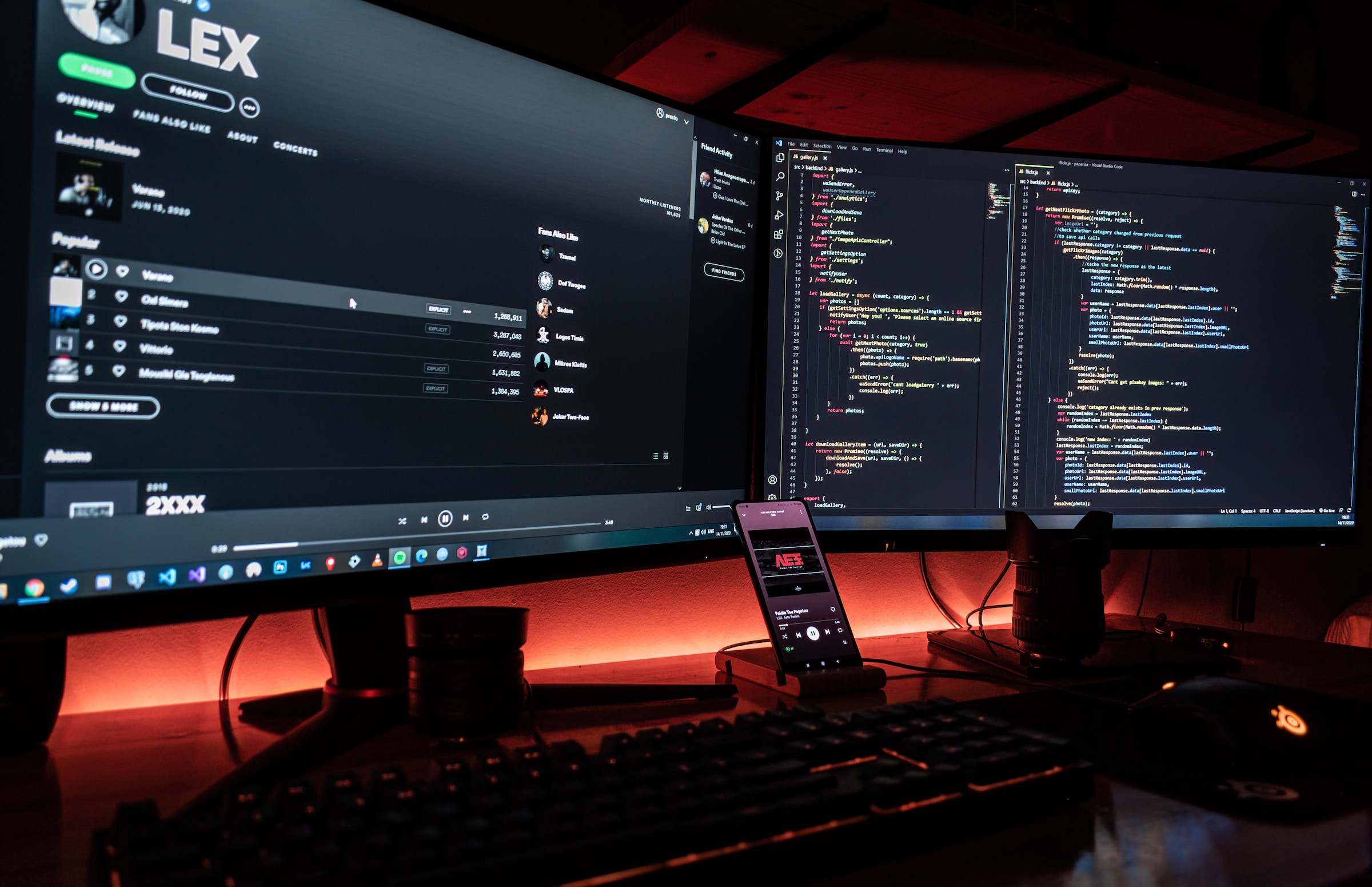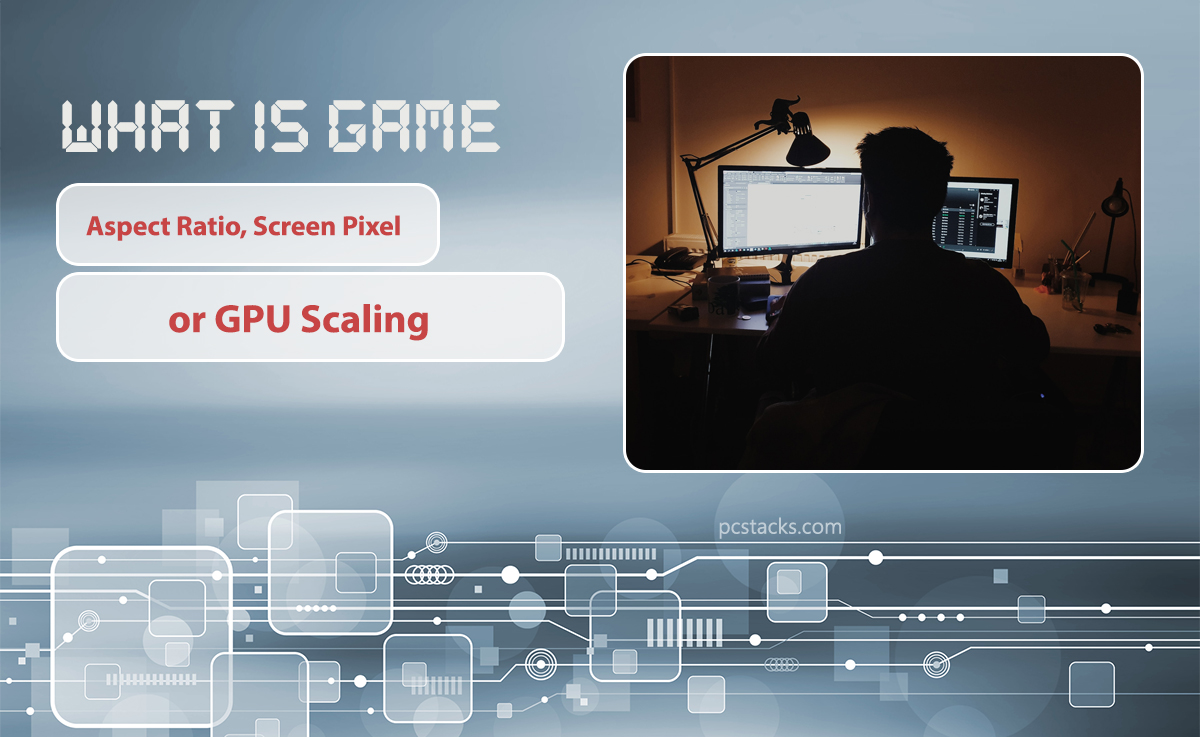Whether you are a normal computer user or a professional gamer or even a video editor, you may feel the need to know about the GPU scaling at any time in your life.
So, without prior knowledge of aspect ratio, you can do nothing about it. However, it is not a very complex thing to talk about. So, in this article, we are going to help you to know what is GPU Scaling and all its related aspects.
You would like to play a third-Person shooter filled with violence, like Gears of War on a PC or laptop. The atmosphere is incomprehensible due to high-end graphics and beautiful surround sounds.
GPU Scaling will allow you to do several things to make your computer run those top-notch games and software without any hassles for you.

If you want to return to the days of old and take part in the mafia, you could be humiliated. You probably have distorted or prolonged images, sluggish gameplay, and inadequate overall performance.
This is because old games were not made with various aspect ratios in line with new systems. So you have to tweak your system to gain from ancient legends like Mafia and GTA San Andreas. GPU scaling is going to save you for this reason.
Aspect ratio will help you adjust your game’s visuals as per your required resolutions. This will help you to get the maximum performance without having to get in touch with a computer expert.
However, most people may find it hard to do it and know about it. In this article, let’s discuss it briefly and know all its related terms properly.
Now, without any further discussions, let’s get started.
Table of Contents
What is GPU Scaling?
GPU scale is an option to change the game’s aspect ratio according to the resolution of your display to achieve high image quality on the video.
You can change the GPU scaling alternative for an AMD graphics card by AMD Catalyst or by AMD Radeon Graphics. Later, you will see a detailed list of steps.
It would be best if you had your display linked directly to the graphics card adapter utilizing DVI or HDMI to change the GPU scaling. Graphics is a specially built processor for games. When you destroy the game’s enemies, the realistic blood and gore are due to the GPU.
Screen scaling is a possibility available in the modern graphic units that allows you to tweak your frame’s aspect ratio, which is the ratio of your height and width.
Changing the aspect ratio makes an old game completely adaptable without delays and delays to your computer.
Due to the aspect ratio, the difficulties you can encounter when playing older games. The aspect ratio of games such as Max-Payne and Quake was 4:3 and 5:4.
However, the current control has 16:9 and 21:9 aspect ratios—the scaling changes to ensure a high-quality performance with no pixel of images.
Games run on 5:4 or 4:3 lower side ratios expand graphics to a frame scale 16:9. This creates distorted, prolonged, and insufficient image quality.
The AMD GPU scale changes the images to increase the accuracy of the pictures without pixels of images.
Other makes – apart from AMD, GPU scaling can be modified as well. You can see below more scaling modes.
If you play in old games or indie games with a 5:4 or 4:3 aspect ratio or applications with those aspects, the average graphics quality of these games displays weak or pixel images on a 16:9 or 16:10 screen. This is where the GPU scale takes place.
They are ironing out the bugs so that widescreen monitors and screens look fantastic.
Black bars across the image occur because analyzing the image is not suited to the scaling process.
Fortunately, the alternative called Underscan / Overscan is available. This scales the image by the scaling choices and changes the appearance to get better quality accordingly.
How GPU Scaling Improves Older Aspect View Rate?
AMD and NVIDIA’s scaling solutions are available via the AMD Catalyst Control Center or AMD Radeon settings or the NVIDIA Control Panel.
It would be best if you used the GPU scale function of both the vendor’s controller panels to overcome the issue while attempting to push a play or application to a modern widescreen display with 4:3 (or another square form aspect ratio).
The GPU scale is most popular to render the game appear in a native resolution to fill up the rest of the display on or around the game with a black backdrop or placed in a dense, black frame.
In this case, the 16:9 aspect ratio monitor would create a slight 4:3 aspect ratio in the display center.
Types of GPU Scaling
You can select three modes to change the GPU scaling using AMD Catalyst or AMD Radeon Graphics.
- Maintain Aspect Ratio
- Scale Image to Full Panel Size
- Use Centered Trimmings
Maintain Aspect Ratio
Maintain aspect ratio allows you to properly view the game without changing the look ratio while the graphics are upgraded. The bursting backdrop is full of black bars or background shapes.
You can play the game in full-screen mode with this option. The original presentation ratio of the game here is not changed, but the graphics are improved.
The extra background holes are filled in with black bars or shapes as the pictures are not extended. These are added to the images on the top, right, or beneath.
Scale Image to Full Panel Size
Scale image to full panel size is an alternative for extending the picture to suit the screen. This typically indicates low picture quality and poor output since the previous aspect ratio is not observed.
This choice helps you to spread your game picture to match your screen view. It is a straightforward solution when playing old games, but the resulting image appears pixel.
That is because the original aspect ratio of the game was not included. No space will be lost when you change the file, but amazing graphics will not be enjoyed.
Use Centered Trimmings
Use centered trimmings turns off scaling by adding the screen’s original resolution in the middle of the monitor. The picture is positioned around a backdrop pattern or black bars.
This mode will be used if your game’s picture is smaller than the size of your screen. The photo is not scalable. The choice places the photo in the middle instead.
Since this alternative does not fill the display, you see a pattern or black bar circling the game image.
Pros and Cons of GPU Scaling
Pros of GPU Scaling
GPU scale increases the gaming interface for users, as it helps to resize and change the games’ size. GPU scaling has the following advantages:
The original aspect ratio of the old games is maintained by scaling mode. In the graphics or unusual shapes along the margins of the screen, there are also no hideous stretches. Without complications, all the specifics are readily available.
Standard GPU-free devices cannot accommodate high-quality graphics. GPU scaling can accommodate these graphics and retain the picture’s consistency in both older and new titles.
You can see black bars where pictures have been cut off where the image goes beyond screen resolution. Aspect ratio has an alternative in the configuration menu that eliminates these bars to underscan/overscan. The picture is changed to boost performance.
Cons of GPU scaling (Effect of GPU on Input Lag)
The significant influence of GPU Scaling on the input latency could be inconvenient to you. There is a great deal of computing power required for the GPU scale. The effect is that the process reveals graphics or game images when their accuracy is being maintained. When you play a frame, it is not easy to see this slight pause when demonstrating.
However, the extra computing power necessary for the graphics is visible when you play games. If you push the button, you can find a little pause in the effect. It is known as an input lag.
For example, when you click a button, the result is slightly delayed. When you play, this is a considerable problem-and strategies and destroys your opponents. It is not very easy.
GPU scaling in old games is best. It is safer to turn off GPU scaling when playing newer games to prevent an input delay.
The appearance of a minor input lag is one of the drawbacks of scaling. In contrast with an image monitor, for example, GPU scaling requires more computing time.
Although it appears like the additional time that it takes to play videos is not apparent, the situation varies when you play sports. The pause, which causes an input lag state, can be easily found here.
It is essentially the pause between the action you will feel and the button which prevents your ability to play or respond quickly. When this occurs, you have to determine if the input lag results are worth more than scaling up the picture due to the GPU scaling.
Moreover, the benchmark of the low-resolution results in games may not be sufficient too. The show scaling may be superior to the scaling under this situation.
Scaling is suitable for older games, as described above. However, if you play new games, it would not work because it only generates a feedback backlog that reduces your overall gaming output.
Is Graphics Scaling bad?
The response to this question depends on the needs of the consumer. If you are an old- or indie-game player who only accepts a 4:3 or 5:4 look ratio. Then your new display with a 16:9 or 21:9 aspect ratio does not experience the best gaming performance during your games.
And if you are running a 4:3 native-looking game or app on a 16:9 aspect ratio display, the effect is a lousy blurring or pixel image. You may also sometimes see the game you are playing with black bars.
If any of this is to be corrected and you choose to play old games with optimizing visual output, you must allow the GPU scaling.
On the other hand, unless you are playing older games, or you could use unique emulators to play certain games, the GPU scaling option would not need to be allowed since all modern games come with multiple aspect ratios helping them.
So, you can adjust the aspect ratio of specific games and align it with your monitor’s default aspect ratio from the in-game settings.
The simple answer to this question is: if you play old games on your PC that come with only 4:3 or 5:4 aspect ratio regularly, the best choice for you will be to allow GPU scaling.
If you are not a fan of playing old games, you do not need to use GPU scaling.
Many emulators are now running games in a separate window that correctly scales the game. However, you could be required to manually scale older games in some cases by using the settings found in the Radeon Settings panel of AMD, or their Catalyst Control Center, or by using the NVIDIA Control Panel.
By supporting GPU scaling, you can experience fine-tuned graphics and image output irrespective of resolution. This helps and improves your familiarity with graphics considerably.
The right graphics available are what players want to see. This makes it possible for us to perceive a radically different reality.
Seeing distorted or stretched image output and poor image clarity are typical concerns with how technology has progressed over the past few years. All of these can be solved with GPU scaling.
The GPU scaling is most commonly disabled for games with the same resolution as the native resolution of the display. Scaling theoretically causes input laggard, roughly 1ms or less, as the GPU requires to process images for scaling.
This may not have visible video consequences, but players would notice delays, about a fraction of a second time, from the moment they pressed the mouse or hit Dash to stop an attack.
If a game that uses a different resolution or aspect ratio above your display’s native resolution is not operating, GPU scaling is not to be deactivated.
Conclusion
Many recent games like Far Cry, Crysis, and Mass Effect do not require any GPU scale and screen sizes consistent with existing monitors.
If you want an uninterrupted playback method, a GPU scaling option is disabled. However, if you would like to play oldies such as Doom and GTA, press for fun to experience GPU scaling.
In all cases, the impacts are evaluated by the non-scalable images to the input latency. We think we have provided you with enough information to work with. However, make sure to research more about your computer’s capabilities and the scaling processes.
We hope this article would be helpful for you. If so, consider sharing it with others too. Also, give us your valuable feedback in the comment section. It will be good if you give us new ideas for the latest articles.
We will definitely help you with everything we can. We keep coming with various regular articles on technology and software-related topics.
So, stay connected with us if you are interested in this kind of content.




